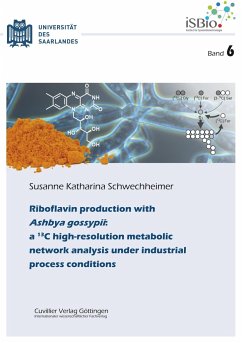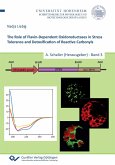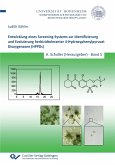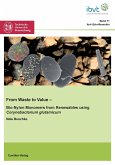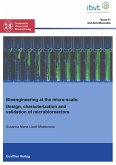The fungus Ashbya gossypii is an important industrial producer of riboflavin, i.e. vitamin B2. Here, we developed and then used a highly sophisticated set-up of parallel 13C tracer studies with labeling analysis by GC/MS, LC/MS, 1D, and 2D NMR to resolve carbon fluxes and obtain a detailed picture of the underlying metabolism in the overproducing strain A. gossypii B2 during growth and riboflavin production from a complex industrial medium using vegetable oil as carbon source. Glycine was exclusively used as carbon-two ¿ but not carbon-one (C1) ¿ donor of the vitamin¿s pyrimidine ring due to the proven absence of a functional glycine cleavage system. Yeast extract was the main carbon source during growth, while still contributing 8 % overall carbon to riboflavin. Overall carbon flux from rapeseed oil into riboflavin equaled 80 %. Transmembrane formate flux simulations revealed that the C1-supply displayed a severe bottleneck during the initial riboflavin production, which was overcome in later phases of the cultivation by intrinsic formate accumulation. The transiently limiting C1-pool was successfully replenished by time-resolved feeding of formate or serine. This increased the intracellular precursor availability and resulted in a riboflavin titer increase of 45 %. This study is the first that successfully sheds light on carbon fluxes during the growth and riboflavin production phase by use of 13C tracers and a complementary platform of analytical techniques.
Hinweis: Dieser Artikel kann nur an eine deutsche Lieferadresse ausgeliefert werden.
Hinweis: Dieser Artikel kann nur an eine deutsche Lieferadresse ausgeliefert werden.
